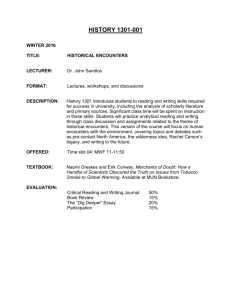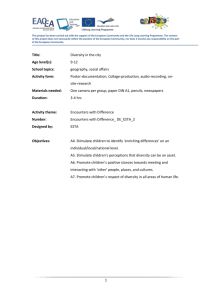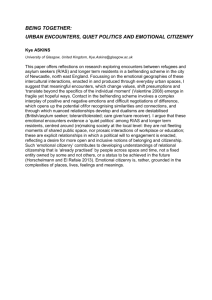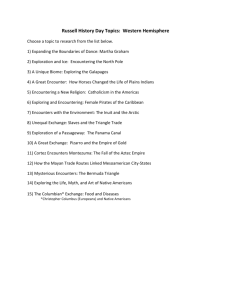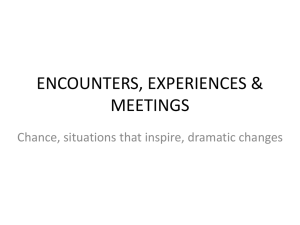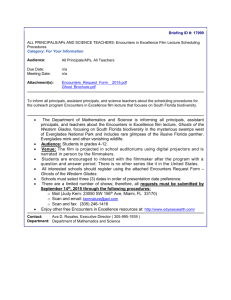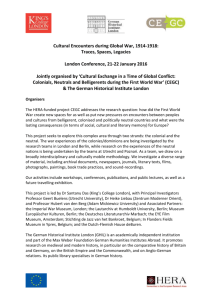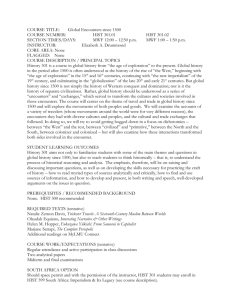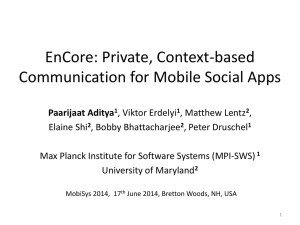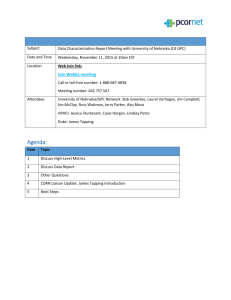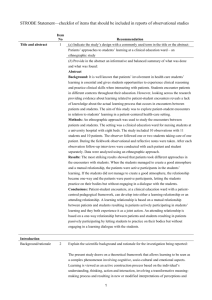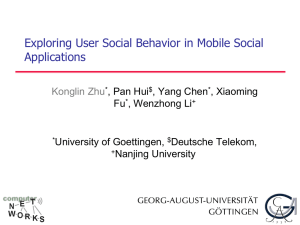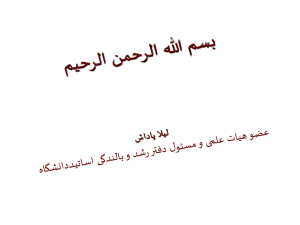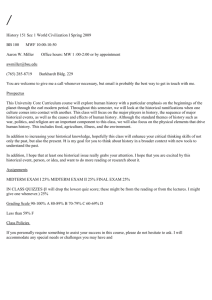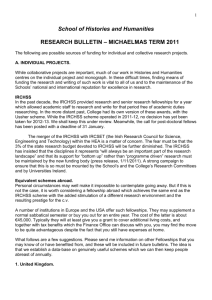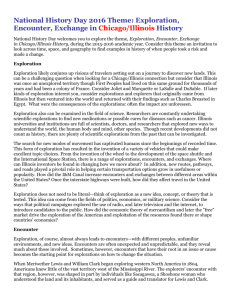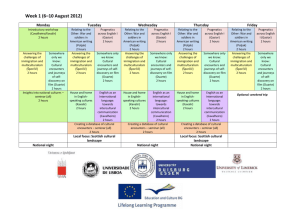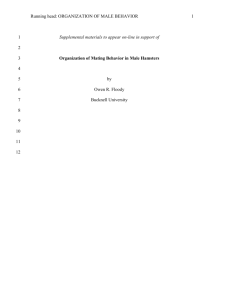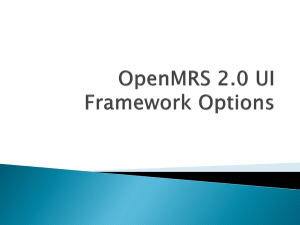Characterising the HERA JRP Cultural Encounters theme
advertisement
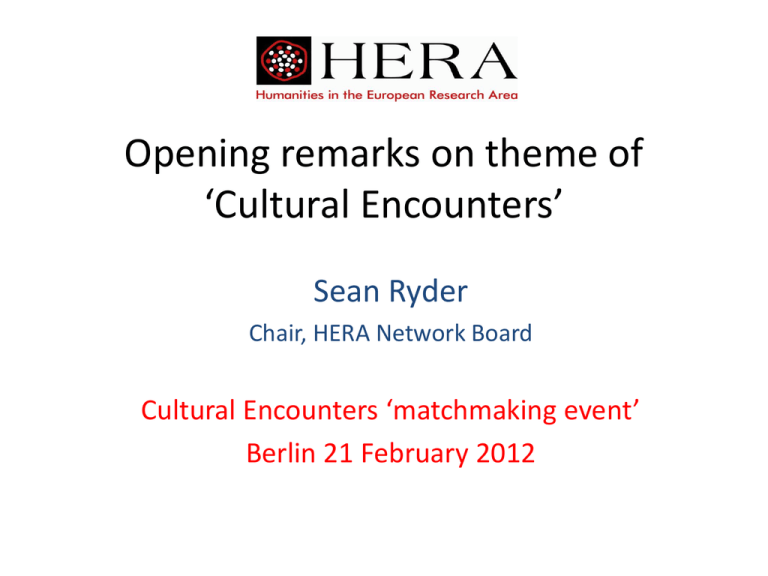
Opening remarks on theme of ‘Cultural Encounters’ Sean Ryder Chair, HERA Network Board Cultural Encounters ‘matchmaking event’ Berlin 21 February 2012 What is HERA? • A partnership among Humanities research councils across Europe (currently 22 partners, including the European Science Foundation) • New JRP (=Joint Research Programme) on ‘Cultural Encounters’ with 18m+ euro. There are 18 countries participating. • Previous HERA JRP in 2009 on ‘Cultural Dynamics’ and ‘Creativity & Innovation’ funded 19 projects. Why HERA? Humanities research matters! Culture matters! Cultural Encounters Understanding ‘cultural encounters’ requires that we: • Think historically • Think spatially • Think about cultural forms: communication, representation, language, literature, art, media, institutions, etc. • Think theoretically Cultural Encounters focus areas • Call text lists possible themes and questions to be addressed by ‘Cultural Encounters’ projects • Not prescriptive or exhaustive, only a set of suggestions! Cultural Encounters focus areas a. Cultural encounters over time and space: • • • • • • Role of CE in social imaginaries / imagined communities Drivers of CE Contribution of arts Cultural transformations Lessons of CE for shaping societal values Cultural consequences of globalisation Cultural Encounters focus areas b. Social and political dimensions of CE: • Historical models of cultural integration – successful and unsuccessful • Dynamics between integration and difference • Influence of policy • Concepts of tolerance and pluralism • Linguistic diversity: effects and policy implications • Identity, belonging, citizenship Cultural Encounters focus areas c. Translation, interpretation, mediatisation: • • • • • Adapting cultural practices as a result of CE Transformative effects of translation CE as stimulus to creativity Music, art, performance, literature as barrier or facilitator Effects of media, digital and otherwise Think about: • Collaboration – Collaboration should give a particular added value to questions of culture, identity, creativity, innovation. Addressing familiar questions in new ways impossible for an individual researcher. • Interdisciplinarity – Not a requirement or a doctrine, but an ambition to challenge the familiar and the conventional – Interdisciplinarity rather than simple ‘multi-disciplinarity’. Not just combining the insights of disciplines, but reaching insights which move the boundaries of the disciplines. Think about: • Internationalisation – A requirement. Like interdisciplinarity, research across national boundaries should have the capacity to unfix the assumptions which form the vision-limits and comfort-zones of specific traditions and identities. • European added value – Why will this multi-national research and partnership make a difference? Why is it something that can’t simply be done with local or national funding? Also: this criterion not about “European” topics, but about the better research made possible though collaboration among researchers based in Europe. Think about: • Transferring/exchanging the knowledge – How can your research process and/or results be linked and disseminated to wider world outside the academy? Possibility for mutually-enriching collaboration with non-academic partners.
